When built, the Peace Maze at Castlewellan Forest Park, Northern Ireland, was the longest permanent hedge maze in the world. Covering 2.7 acres with a path nearly two miles long, it provides a nice opportunity for those who want a challenge. In addition to the physical and mental challenge it provides, the path is meant to commemorate the much longer and harder challenge of bringing peace out of decades of conflict between Protestants and Catholics in Northern Ireland.
Commissioned in 1998 after the Good Friday Agreement which officially ended "The Troubles" of the past century, the maze is a symbol and tribute to peace in that area of the world. The maze incorporates components of remembrance and reminder from this struggle into its design and structure as well as marking the peace signalled by the Agreement.
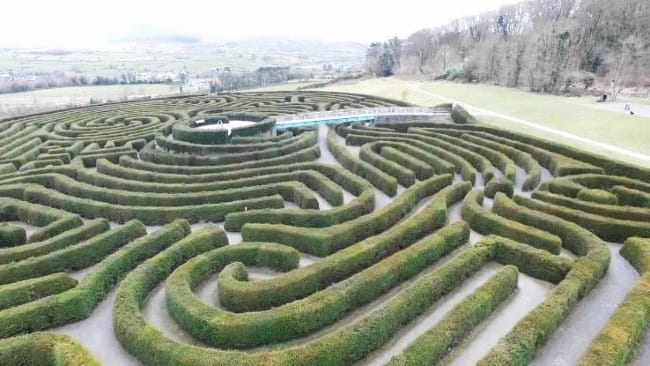
The maze was conceived by anthropologist and landscape designer Beverley Lear, who, in creating the design, incorporated the solicited input of 4,000 school children who responded to a competition aimed at gathering their ideas. Children from across Northern Ireland sent in design suggestions, many of which were adopted into the design—including a rocky road, a bridge, a drinking fountain, and the center bell. Along with their ideas, they included their rationale for including these elements—with comments such as, "Protestants and Catholics drink from the same source" as the reason for including a drinking fountain.

The maze is planted with 6,000 yew trees, the yew having been specifically chosen because of its connotations of peace and remembrance, and its natural longevity. (In the Christian Celtic tradition, in particular, it represents death and resurrection). One of the longest-living native species in Europe, the physical maze of yew trees with its message of peace is intended to outlast the people who planted it, pointing future generations toward necessary steps in maintaining the current state of peace. Planting the trees was a large-scale community project in which 5,000 people from all over Northern Ireland, including a large number of school children, participated in community planting days. As an intentional group project, there is no specific monument denoting who planted which tree or where.

The structure of the maze embodies certain atypical elements that were included because of the way those elements encourage and symbolize peacemaking and collaboration. In particular, the hedge walls are shorter than most mazes—just under five feet. This, along with a path wide enough (over six feet across) for two people to walk beside each other, is meant to encourage communication and interaction, so that people will work together to find a solution, rather than having to walk single file and find their way independently. Both those on the same part of the path and those on the other side of a hedge are able to talk and compare notes with each other. The importance of working with others and finding joint solutions to the maze is a small-scale picture of the commitment to communication and working together needed to accomplish lasting peace out of difficult conflict.
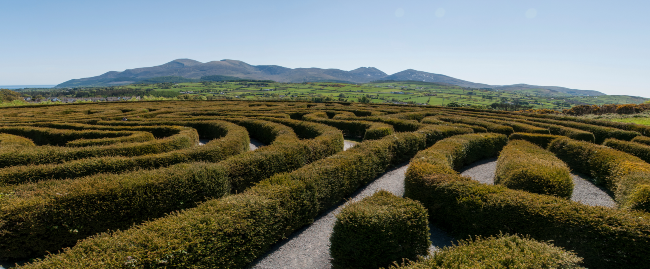
As the designer of the maze stated, "If you think about it," she added, "being in a maze makes people talk to each other. You try to find someone who can help lead you out, and therefore people who would never normally be together are brought together."
The overall layout of the maze reinforces this need for interaction. With its two distinct halves, a person must cross from one to the other in order to succeed and escape from the maze. This is a physical and visual reminder of the necessity of leaving one's own position to understand the position of another when conflict arises. If a person insists on staying on one particular side of the maze, they will never find the solution or the exit.
The overall pattern of the maze was designed to resemble the human brain, which makes me think also about leaning too heavily on just the "right" side of our brain or the "left side." Perhaps we would find better solutions to our problems if we visited the less-used side of our brain more often.
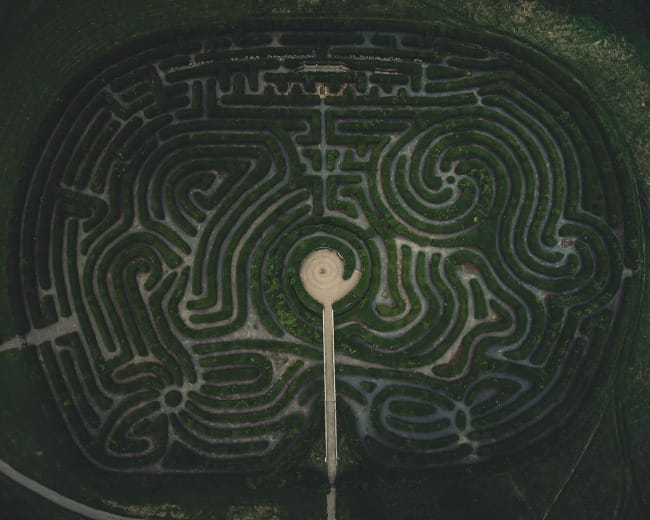
In the center of the maze is the Peace Bell, which, per the suggestion of the school children, is located on a mound at the center of the maze where people first emerge from the labyrinth. Visitors are encouraged to ring the bell when they arrive, announcing their success. (It has been said that this is one of the most-rung bells in all of Ireland). In addition to spreading news of their own completion of the puzzle, the ringing bell is meant to encourage those who are still wandering along the twisting paths of the maze, conveying that they, too, can find their way to the center, if they just persevere in their efforts—and perhaps ask for some help from someone else.
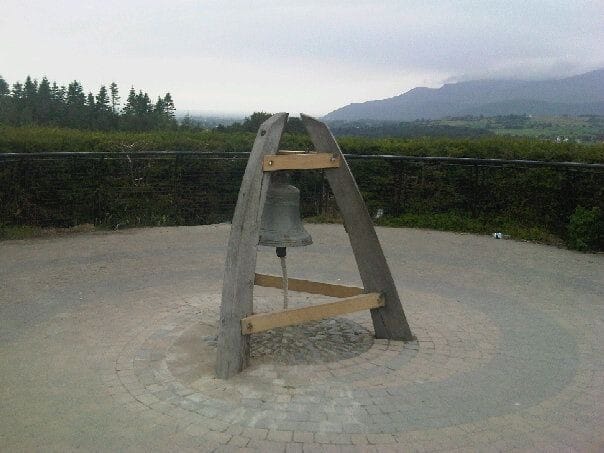
One of the final pieces placed into the maze was a bridge, a familiar metaphor for joining disparate places or people together—and the way out of the maze.
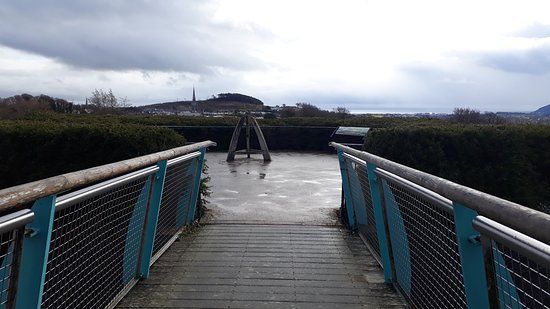
According to the original proposal, the maze is meant to represent the path to a continuing peaceful future for Northern Ireland and the steps that are being taken to uphold the peace that has been brought about. The project was funded by the European Union's Special Support Programme for Peace and Reconciliation and by the Down District Council.
Reflection Questions: What community projects have you been involved in? In your own setting, have you experienced the benefits of collaboration in seeking solutions? In the face of large problems, what has helped you persevere in pursuing solutions?
Feel free to leave a comment by clicking below or contact me directly at info@circlewood.online.
Louise
